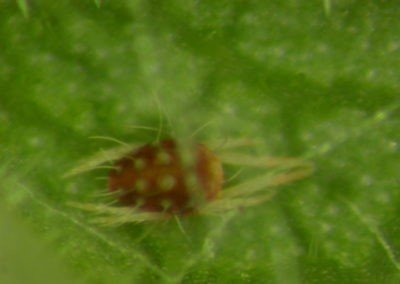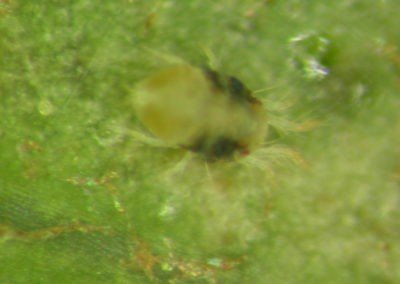These are not insects but arachnids since they have eight legs whereas insects have six. Yellow and red mites belong to the Tetranychidae (spider mite) family and are classified as secondary vineyard pests.
Phytophagous mites should not be confused with typhlodromes which are predatory mites that play a major role in the regulation of phytophagous mites that are harmful to vines.


